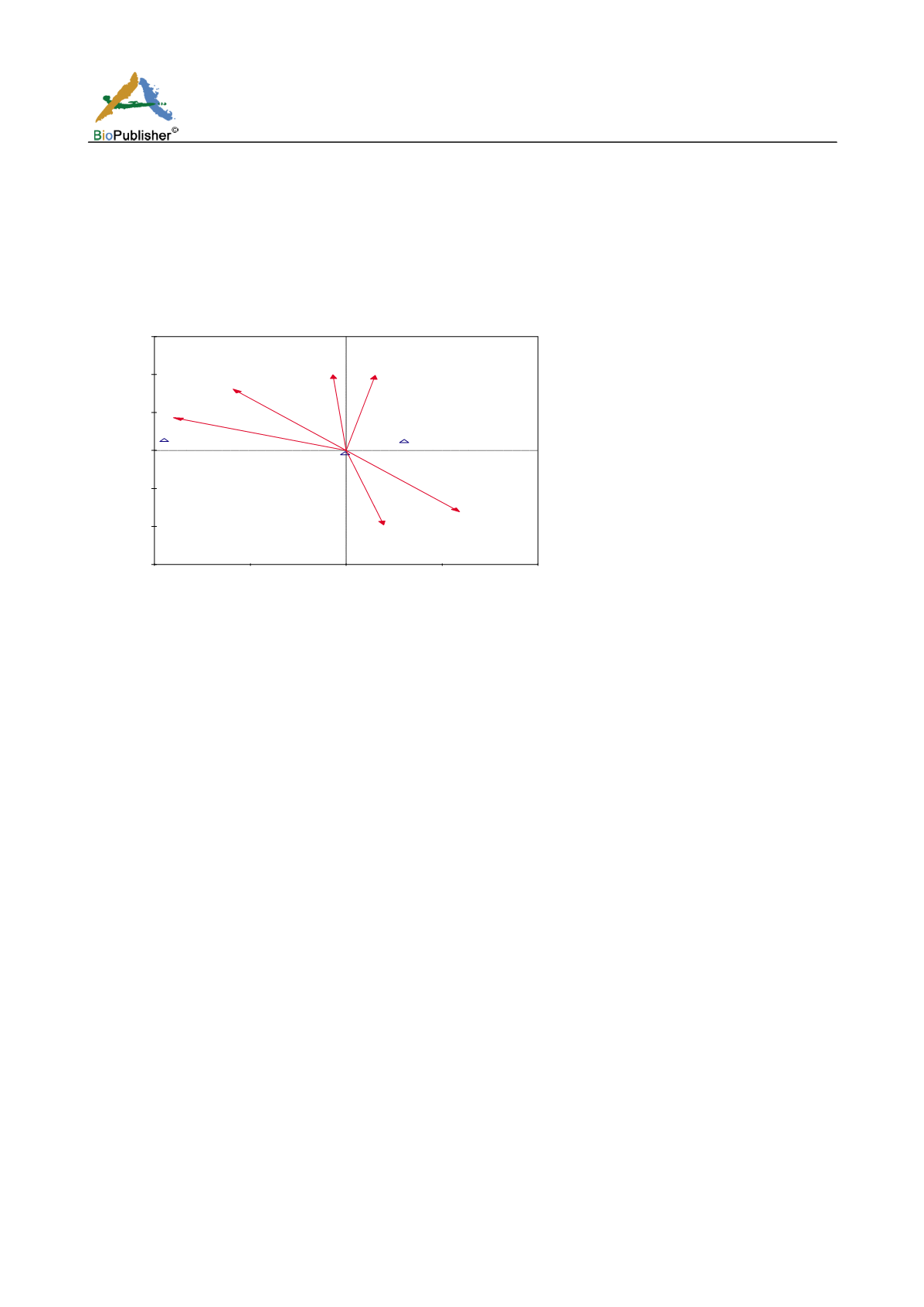
International Journal of Marine Science 2016, Vol.6, No.27, 1-22
18
A canonical correspondence analysis (CCA) of the abundance of these identified species with the principal
environmental factors identified to influence biological variations revealed that the first two ordination axes
accounted for 100% of variations in the larvae abundance. pH, phosphate and Revelle factor were found to be on
the positive end of the first axes while carbonate ion concentration, total alkalinity and nitrates were found on the
negative end. On the second axis, pH, carbonate ion concentration, total alkalinity and nitrates were found on the
positive end and Revelle factor and phosphates on the negative end. Decapod species, consisting of species from
the family Penaeidae and family Portunidae were found to relate well with Revelle factor (Figure 15).
Figure 15: CCA biplot of identified fish larvae in the peak season of the artisanal fishery
4 Discussions
Two ocean acidification parameters (pH and carbonate ion concentration), two seawater carbonate chemistry
parameters (total alkalinity and Revelle factor) and two nutrients (nitrates and phosphates) were identified by the
Principal Components Analysis to significantly (RELATE, r = 0.955, p < 0.05) account for variances observed in
the sampled sites. The influence of these parameters, especially those of the seawater carbonate chemistry and
ocean acidification indicators tend to paint a trend of the possible occurrence of ocean acidification impacting
abundance and diversity of fish species in the two sampled fisheries.
Diversity indices measured for the two fisheries indicate a higher species richness and diversity in the artisanal
fishery over the semi-industrial fishery (Table 8), with the artisanal fishery exploiting a greater multi-species
diverse assemblage. The artisanal fishery is operated at the nearshore environment, an environment usually used
as breeding and nursery grounds for many species (Islam and Haque, 2004), thus, the diverse assemblage. Of the
33 fish species identified in the artisanal fishery, representing catches from the beach seine fishery, 28 species
from 16 taxonomical families were identified by Aggrey-Fynn and Sackey-Mensah (2012) over a 17-month
sampling period on the central coast of Ghana. Nunoo (2003) also identified 23 species from 11 taxonomic
families over a 24-month sampling period on the eastern coast of Ghana.
Major species identified which accounted for about 85% of total catches such as
Brachydeuterus auritus
,
Selene
dorsalis
,
Chloroscombrus chrysurus
, are in agreement with major species identified by Nunoo (2003) and
Aggrey-Fynn and Sackey-Mensah (2012) in the artisanal fishery. However the species
Sardinella aurita
, which is
usually known to be high in abundance especially during peak fishing seasons on the coasts of Ghana as a result
of seasonal upwelling (Koranteng, 1995; Minta, 2003), had a lower relative abundance of 0.35% as compared to
13.1% found by Aggrey-Fynn and Sackey-Mensah (2012). Data from FAO
SQServlet?file=/work/FIGIS/prod/webapps/figis/temp/hqp_126607272913474220.xml&outtype=html) show a
general downwards trend of
Sardinella aurita
catches over the past ten years. This could be a contributory factor
to observed lower catches of
S. aurita
in the artisanal fishery.
Relations of fish species and indicators and parameters of ocean acidification from the CCA biplots revealed
impacts of ocean acidification on abundance of species such as
Sardinella aurita
,
Sardinella maderensis
,
Selar
-1.0
1.0
-1.5
1.5
Sardinel
Scyacium
Decapods
TOTAL AL
REVELLE
PH
CARBONAT
Nitrates
Phosphat


